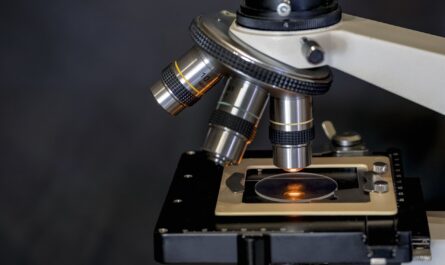Power management integrated circuits (PMICs) play a vital role in modern electronic devices. With continued advancement in semiconductor technologies, electronic devices are becoming more powerful yet compact. This has increased the demand for efficient power management solutions. PMICs help regulate power requirements and improve battery life across a wide range of applications.
What are PMICs?
A power management IC (PMIC) is an integrated circuit that controls and manages the power requirements of an electronic device. PMICs allow efficient distribution of power from batteries or power adapters to different components within a circuit. The key functions of a PMIC include voltage regulation, battery charging, system power sequencing, power rail switches and protection.
PMICs regulate voltages to ensure stable power delivery to different loads running at varied voltages. They step up, step down or invert voltages as per voltage requirements of loads. PMICs integrate multiple linear voltage regulators, switching regulators and other power components on a single chip. This helps reduce component count, board space and bill of materials compared to discrete solution.
Role of PMICs in Portable Devices
PMICs help maximize battery life by providing precise power to each component only when needed.
PMICs in smartphones distribute power from the battery to various components like the processor, memory, display, Wi-Fi/Bluetooth modules operating at different voltages. They integrate low dropout regulators, switching regulators, battery charging circuits and protection features. During each usage state like active screen, standby etc, PMICs optimize power efficiently to specific loads and shut off power to unused modules to extend battery life.
PMICs play a key role in fast and safe battery charging as well. They incorporate charging circuits and safety features to prevent overcharging and over-discharging. Advanced PMICs support various fast charging standards and allow devices to charge rapidly without risk of damage. The PMIC monitors cell voltages, current limits, controls temperature and safely delivers optimized power during the charging cycle.
Role of PMICs in IoT Devices
The Internet of Things (IoT) has accelerated the usage of compact, low-power devices for various applications. PMIC ICs are essential building blocks powering the growing number of IoT endpoints. Being battery-operated most times, IoT nodes require highly efficient power management to function for longer durations unattended.
PMICs powering IoT sensors optimize power consumption according to duty cycles and operating modes. They incorporate techniques like dynamic voltage scaling to reduce power consumption during idle or sleep states. PMICs ensure continuous operations through safe, reliable power delivery while extending battery runtime. This helps reduce maintenance and replacement costs for large-scale IoT deployments.
Industry leaders are developing innovative PMIC solutions specifically tailored for IoT nodes. Ultra-low quiescent current linear regulators, buck-boost converters and sophisticated power delivery networks help achieve long lasting performance from small batteries. Integrated energy harvesting capabilities further enhance uptime by supplementing power from ambient sources like light, motion or RF.
Automotive PMIC Solutions
The automotive industry is another major growth area for PMICs. Modern vehicles are packed with several electronic control units (ECUs) and safety systems. Harsh under-hood conditions demand robust power delivery components. PMICs play a critical role in powering systems across different automotive domains.
Some key automotive applications of PMICs include – powertrain management, advanced driver-assistance systems (ADAS), battery management, interior lighting and infotainment systems. Automotive PMICs integrate enhanced protections against transients, load dumps, over-voltage and reverse connections. They deliver stable supplies despite wide input voltage variations.
Cutting-edge automotive PMICs support dual battery architectures, allow parallel battery charging and discharge balancing. Emerging driver assistance features also employ advanced machine learning processors requiring robust ultra-low noise power solutions. PMICs efficiently distribute and manage power to ensure reliability of safety critical automotive electronic systems.
Future Trends
PMIC technology continues to evolve with changing market needs. Some notable future trends include integrated GaN power stages, autonomous battery management, motor drive control and power nodes for AI/ML applications. GaN semiconductors allow higher power density and efficiency in PMICs at compact sizes.
Autonomous battery management with self-healing abilities will optimize usage based on conditions. PMICs will directly drive small electric motors in appliances and robots. Advanced processors for AI/ML workloads demand ultra-stable power rails that can be achieved through sophisticated digitally controlled voltage regulators integrated in PMICs.
As electronic systems demand more from batteries, PMIC innovation will remain pivotal. The role of PMIC ICs will further expand from power distribution to autonomous power and thermal management. Advanced PMIC solutions will be critical enablers for future technologies across various industries.
In summary, power management ICs are essential building blocks that enable optimal and efficient power distribution in electronic systems. With versatile functions integrated on a single chip, PMICs help reduce component count, size and bill of materials. Their ability to maximize battery runtime through multiple voltage regulation, sequencing and protection makes PMICs indispensable across portable consumer devices, IoT nodes, automotive and industrial applications. Continued innovation will see PMICs playing bigger roles in autonomous power solutions of future technologies.
Note:
1. Source: Coherent Market Insights, Public sources, Desk research
2. We have leveraged AI tools to mine information and compile it



